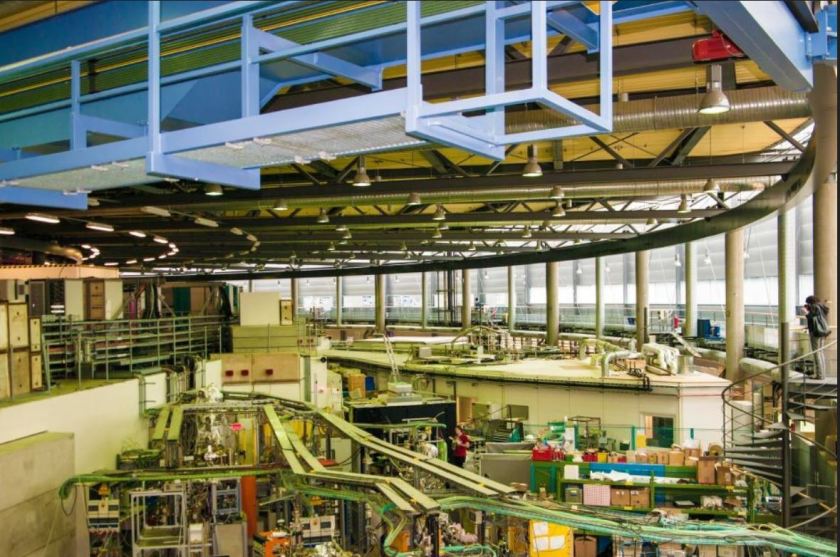Shutdown BESSY II: work has started

The experimental Hall of BESSY II. HZB / D.Butenschön
As of 30 July 2018, BESSY II will be down for several weeks. In the summer shutdown, important components in the storage ring tunnel will be replaced and overhauled. The first conversion work for the BESSY VSR project also begins. Upgrading BESSY II into a variable-pulse-length storage ring (BESSY-VSR) will provide unique experimental conditions for researchers worldwide. The shutdown lasts until 30 September 2018, and user operation will recommence on 30 October 2018.
While the ring is down, the HZB employees will be completely modifying the multipole wavelength shifter, the EDDI beamline and the radiation protection hutches. This space will be needed for installing the cold supply for the superconducting cavities in the storage ring. These are key components in the creation of BESSY VSR. Keeping them cold, however, requires an elaborate infrastructure, which is to be built up in the experimental hall over the next two years.
There is even more that has to be done during this shutdown: colleagues from the Institute for Accelerator Physics are constructing a diagnostics beamline for BESSY VSR in the vicinity of the EMIL hutch. In addition, the two wavelength shifters will be revised and further components (Landau cavities and a CPMU17) will be installed for the EMIL laboratory. Plus, a laboratory for electrochemical experiments on solid-liquid boundary interfaces (BEIChem) is to be built at BESSY II.
You can take a detailed look at everything that will be going on during the shutdown in the HZB Science Blog
(sz)
-
A new way to control the magnetic properties of rare earth elements
The special properties of rare earth magnetic materials are due to the electrons in the 4f shell. Until now, the magnetic properties of 4f electrons were considered almost impossible to control. Now, a team from HZB, Freie Universität Berlin and other institutions has shown for the first time that laser pulses can influence 4f electrons- and thus change their magnetic properties. The discovery, which was made through experiments at EuXFEL and FLASH, opens up a new way to data storage with rare earth elements.
-
HZB magazine lichtblick - the new issue is out!
In his search for the perfect catalyst, HZB researcher Robert Seidel is now getting a tailwind – thanks to a ERC Consolidator Grant. In the cover story, we explain why the X-ray source BESSY II plays an important role for his research.
-
BESSY II shows how solid-state batteries degrade
Solid-state batteries have several advantages: they can store more energy and are safer than batteries with liquid electrolytes. However, they do not last as long and their capacity decreases with each charge cycle. But it doesn't have to stay that way: Researchers are already on the trail of the causes. In the journal ACS Energy Letters, a team from HZB and Justus-Liebig-Universität, Giessen, presents a new method for precisely monitoring electrochemical reactions during the operation of a solid-state battery using photoelectron spectroscopy at BESSY II. The results help to improve battery materials and design.
